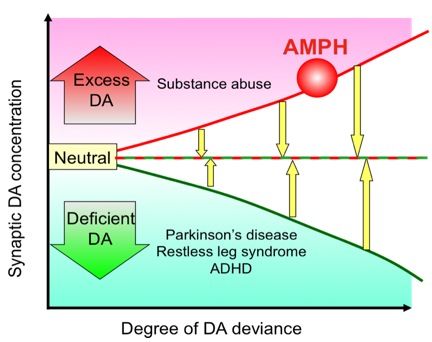Restoring Dopamine Homeostasis by Acupuncture: A Neurocircuit Model
Project Leader: Iris Yin-Ching Cheng, PhD
Project Funding: NIH, NCCAM R21AT004455
The ultimate goal of this application is to study the therapeutic mechanism of acupuncture in treating dopamine (DA) relevant disorders, specifically targeting Parkinson's disease (PD) and substance abuse. Acupuncture is purported to alleviate disorders partly by restoring body homeostasis. For DA disorders, we hypothesize that acupuncture attenuates DA release if there is an excess amount (such as in the cocaine-conditioned brain) and enhances DA release if there is an insufficient release (such as in the PD). We proposed an explanation based on a neuronal circuitry model. In our model, acupuncture, a form of peripheral stimulation, activates somotosensory cortex and subsequently leads to glutamate (Glu) release in the striatum. The striatal Glu subsequently modulates the DA release via direct innervation of the dopaminergic terminals ("PUSH" or increase DA release) and indirectly via GABAnergic neurons ("PULL" or decrease DA release). Acupuncture shifts the strain between the "PUSH" and "PULL" forces to modulate DA release back to a normal homeostatic level. We will first investigate the effect of acupuncture at DA excess and deficient states induced pharmacologically in naove control animals. The pharmacological model of naive animals provides a simplified and controllable DA environment for testing the basic elements of our hypothesis. Upon the success in normal controls, we will test this DA homeostasis hypothesis on animal models of PD and drug addiction in terms of its treatment efficacy --- a "high-risk and high-yield" scientific research aiming for understanding the mechanism of acupuncture in clinical therapy.

|

